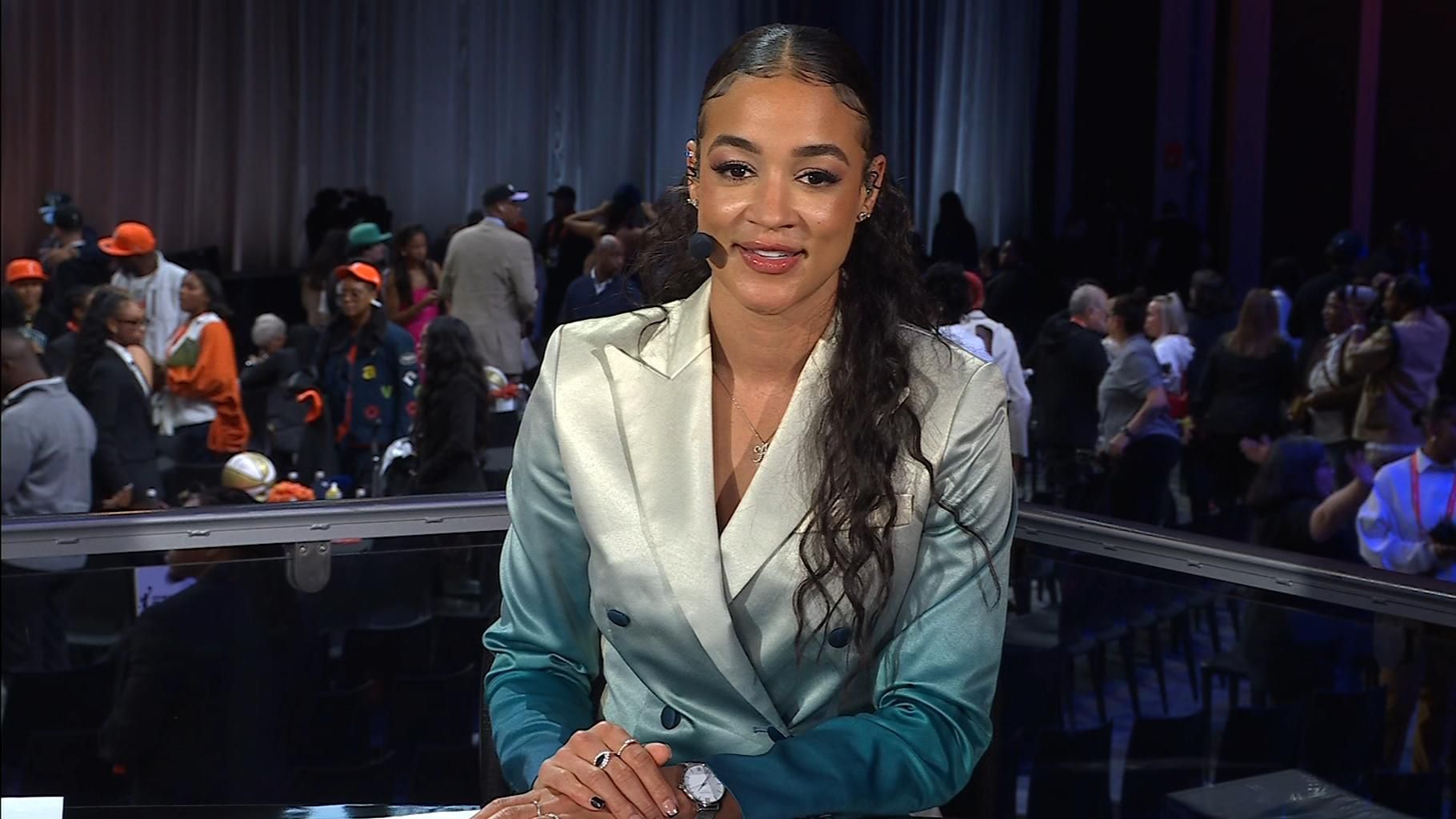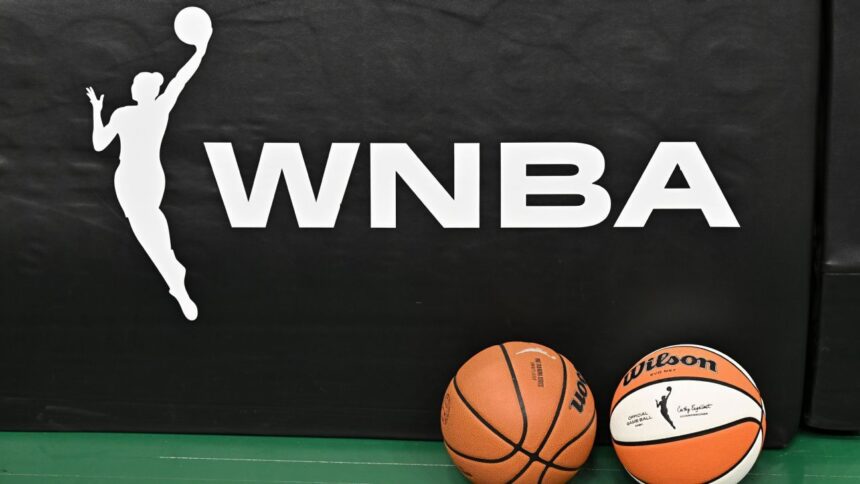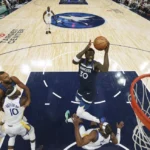The WNBA at a Crossroads: Key Negotiations for the Future of the League
The WNBA season could be marked by momentous actions off the court. The league and the Players Association (WNBPA) have initiated negotiations for a new collective bargaining agreement (CBA), a fundamental document that defines crucial aspects such as the salary cap, roster size, eligibility, and season length, among others. The WNBPA opted to terminate the current CBA at the end of this season, two years before its scheduled expiration.
This CBA, agreed upon in January 2020, laid the groundwork for the rapid growth of the WNBA over the past five years, highlighting a regular season with the highest television viewership and record merchandise sales. Following the 2024 season, the league finalized new broadcast agreements that will generate significantly higher revenue.
In addition, the WNBA expands for the first time in 17 years. The Golden State Valkyries will join the league this season and two more teams (Toronto Tempo and a yet-unnamed Portland team) will enter in 2026, with a sixteenth team on the horizon, which will surely break the record for expansion fees shared by the existing ownership.
In this context, the WNBPA is prepared for what President Nneka Ogwumike describes as another “transformative” CBA.
“This league is transforming,” Ogwumike stated. “As a players’ association, we want to evolve with it and have that reflected in how players are cared for and how our protections are not surpassed by the evolution of this league.”
Nneka Ogwumike, President of the WNBPA
WNBPA Executive Director Terri Carmichael Jackson agrees with this view of the CBA.
“Looking back, when reading the first CBAs, one of the conclusions is that the players were grateful just to have a league,” she said. “I think we surpassed that mentality in 2020. Our president, Nneka Ogwumike, and all of our player leadership are aware of the momentum we have and we must take advantage of it.”
Terri Carmichael Jackson, Executive Director of the WNBPA
The stated goal for the 2026 CBA is transformative. The hope is that the league and teams aim for the same goal. In women’s sports, it is particularly true that when the players win, everyone wins.

Nneka Ogwumike, president of the WNBPA since 2016, was re-elected for her third term in December 2022. She played a key role in negotiating the groundbreaking 2020 collective bargaining agreement.
What is the players’ approach to this CBA?
The central point of any new CBA will undoubtedly be salary increases for the players. The last renegotiation raised the maximum salaries of the stars from $117,500 in 2019 to $215,000 in 2020, with an increase in the salary cap of more than 30%, going from $996,100 per team to $1.3 million. It is likely that greater increases will occur this time thanks to the improvement in WNBA revenue.
A team source suggested that maximum salaries may reach one million dollars, which would represent an increase of approximately 300% over the current supermax of $249,244 and would imply a salary cap of between $4 million and $5 million per team.
“No player has stopped talking about salary,” Ogwumike said about her conversations with other players about the new CBA. “But it’s not just about the number. I think it’s about the system, about creating a new structure around salaries, one that doesn’t limit us as it has in the past.”
Nneka Ogwumike, WNBPA President
Specifically, the players want to participate in the owners’ profits as the league grows. The current CBA included 3% increases in the salary cap and maximum salaries, as well as in the minimums for the players, which limited them to restricted growth.
The last two CBAs have presented revenue-sharing targets with the potential to increase the salary cap, but they were not reached. The timing of the current CBA set those targets based on the 2019 season, prior to the pandemic, and made the revenue targets cumulative from 2020, when the league played its season in the so-called “wubble” at the IMG Academy in Florida without ticket sales. As a result, even the increase in ticket sales last year did not put the players in a position to reach those targets.
“When we talk about salary and compensation, it’s not just about the number,” Ogwumike said. “It’s about revenue sharing and the salary structure. I think it’s been hard for people to understand that that’s how we’ve been thinking about it.”
Nneka Ogwumike, WNBPA President
The players will also seek to codify private plane travel. When the WNBA first instituted private travel for all flights last May, it specified that the change would apply through the 2025 season, making it a point of negotiation. Private plane travel is a must for the players.
“It’s here,” Ogwumike said. “I don’t foresee a world where we can go back. I see a world where we have to write it into the CBA. I think that’s the next step now. It’s been an amazing development over the last year, especially for health and safety, but we have to make sure it’s something that’s fundamental to our professional experience in the league.”
Nneka Ogwumike, WNBPA President
What will owners look for and how might the players respond?
The owners will not speak publicly about the specific issues they are advocating for. However, based on previous CBA negotiations and conversations with sources familiar with the owners’ mindset, we can speculate on where they might draw harder lines in the negotiation.
Prioritization, the mandate that players report to training camps on time and “prioritize” the WNBA over overseas commitments, was a major issue in the last CBA. Players accepted it in order to receive higher salaries in 2020. It seems unlikely that owners will relinquish prioritization in this agreement.
There are some exceptions to the prioritization, including those for younger players who settle abroad and those who compete for national teams, which could remain in effect. But the owners say that the WNBA’s firmness on prioritization brings more respect to the league, and that it has driven some scheduling concessions from foreign leagues and FIBA events so that they do not conflict with the WNBA season, whenever possible.
Owners are also likely to want to keep the terms of the annual draft firm, maintain a rigid salary cap, and the designation of key player. These things allow teams to have the greatest possible opportunity to secure and retain their players. The union’s desire for the salary cap to be softened could be a major source of contention.
The league’s revenue sharing could be an area where owners are more open to modifying it so that the target needed to activate it for the players is achievable. It’s one thing to have revenue sharing conditions in the CBA, as has been the case for a long time, and another thing for those conditions to actually be achievable.
Another area where owners might be willing to make changes is how teams handle injured players, both in the short and long term, and how that affects teams’ ability to be competitive.
It’s common to perceive ownership in any labor negotiation as the “heavy”, and the WNBA fanbase tends to side with the players they idolize. Realistically, there has to be a give and take in all those negotiations, and the goals of the WNBA owners and players are probably not unreasonably far apart. But there will be some obstacles.
The prioritization rule has been a sticking point for players, who historically could earn more money playing internationally than in the WNBA. The arrival of Unrivaled and Athletes Unlimited as opportunities to play professionally in the United States during the WNBA offseason has changed the conversation to some extent, but prioritization remains a key issue, particularly for international players.
“This is a record number of international players selected in the first round,” Ogwumike noted after three were selected last month, including Dominique Malonga from France, which matched the highest mark of 1998 and 2000. “They have a different education when it comes to developing in basketball than many of the players who maybe choose to go to college or are local. I think shutting that down, especially to younger players, is stifling in a sense that I think could actually hinder the talent that’s seen in the league.”
Nneka Ogwumike, President of the WNBPA
Ultimately, the players want the WNBA to be a priority as well. They would simply prefer that to happen by virtue of the league increasing salaries to a point where the league becomes the destination of choice for all the best players in the world, including those born outside the United States, as we already see in the NBA.
“If there’s a league that pays you more, you’d prioritize that league, you’d think,” Ogwumike said. “I hope we can lean more into implementing a new salary structure that can offer that as an opportunity for players, instead of them leaving, not giving them the investment they deserve from a salary and compensation standpoint and then having to decide where they want to play.”
Nneka Ogwumike, President of the WNBPA

Terri Carmichael Jackson, executive director of the players’ union, said that in previous CBAs, WNBA players were forced to feel grateful just to have a league. That is not the case in 2025, she said.
What should we add to the CBA?
WNBA rosters have been limited to 12 players since 2014. As the league grows, and especially as the season extends to a record 44 games this season and perhaps beyond, it’s time for more players per team. By contrast, NBA rosters consist of a maximum of 15 full contracts plus up to three more spots for players on two-way contracts who also split time in the G League.
Although the WNBA maximum is 12 players, teams can also choose to have 11, which gives them more money to spend per spot, while staying under the league’s rigid salary cap. That puts them in danger of falling to a single digit due to injuries.
Ogwumike’s team, Seattle, for example, expects to start the season with 11 players. Katie Lou Samuelson’s knee injury during training camp means that only 10 will be active. And the Storm have several players who could leave the team mid-season to represent their countries in international competitions.
“I’ve played more years than I wanted to with only eight available players,” Ogwumike said before Samuelson’s injury. “I don’t think that’s indicative of a professional league.”
Nneka Ogwumike, WNBPA President
WNBA Commissioner Cathy Engelbert has argued to the players’ association that increasing roster spots is not profitable for the league, as more players do not generate additional revenue in the same way as adding expansion teams to increase the number of jobs in the WNBA.
The CBA does provide for exceptions due to difficulties for teams to add additional players when they fall below 10 active, but even that can be complicated. In the event of a last-minute illness, especially common during the COVID-19 health and safety protocols in 2021 and 2022, sometimes players would get on a plane and play the same day after being signed to a hardship contract.
“I’m not saying we go from 11 to 15,” she said, “but there was a time before I entered the league when 13 roster spots were available [most recently in 2008]. I think that’s incredibly reasonable, even if we incorporate maybe an IR [injured reserve] component where you have players who are still within the system and you don’t have a group of players waiting to be called up and jumping from team to team. I think there’s a more efficient way to do it with a new language around roster size.”
Nneka Ogwumike, WNBPA President
Draft eligibility rules may need to be updated and simplified. As they stand now, along with college seniors, juniors who turn 22 in the draft year or are on track to graduate within three months of the draft can declare. Meanwhile, international players not playing in the U.S. college system are eligible if they turn 20 in the draft year.
Perhaps the WNBA could consider having rules similar to those of MLB and college baseball, where players are eligible for the draft after their third-year season or when they turn 21, whichever comes first. That way, women’s basketball players would still be in school for at least three years, but there wouldn’t be what seems like an arbitrary disparity between which third-year students can leave early and which ones can’t, based simply on date of birth. With the advent of name, image, and likeness (NIL) deals changing things so much financially for college players, many might choose to stay for four seasons anyway.
“That has come up in conversations, especially after the NWSL eliminated the draft,” Ogwumike said about the age limit rules and the National Women’s Soccer League. “I don’t foresee [ending the draft] in basketball. I think it would be a little more complicated for us to do it that way. But it has been in conversation, exploring what the age limit may be.”
Nneka Ogwumike, President of the WNBPA
“Many things are going to change the composition of our league. You see more international players. Even the footprint of our league: we are expanding teams, we are adding games. There are going to be so many different variables that contribute to what might be a change in the age limit.”

How does the WNBA CBA compare to the NBA CBA?
The biggest structural difference between the NBA and the WNBA is the latter’s rigid salary cap, which is more comparable to the NFL among the major American professional sports leagues.
Since the early days of the NBA’s salary cap, introduced in its modern form in 1984-85, when the league was booming economically as the WNBA is now, a variety of exceptions have allowed teams to exceed the cap to re-sign their own players, make trades, and add lower-priced free agents. Over the past three decades, the NBA has tried to control overspending teams with a luxury tax first introduced in the 1998-99 CBA and, more recently, with limitations on exceptions for teams paying substantial taxes.
Moving from the rigid salary cap of the WNBA to the complex, sometimes Byzantine series of NBA rules, rewritten and expanded over decades, is not realistic and might not be desirable. The NBA’s CBA is almost twice as long as its WNBA counterpart (676 pages versus 350 for the WNBA) and requires teams to find salary cap analysts who specialize in understanding the rules and how to take advantage of them.
However, as the general manager role specializes in the WNBA after having long been occupied primarily by head coaches, front offices would like to have more flexibility. Team and player options would be a relatively easy change to mirror NBA contracts. Currently, team options only exist as part of rookie contracts for draft picks and cannot be negotiated individually.
Some degree of ability to exceed the salary cap through trades would also facilitate mid-season deals and turn the trade deadline into the kind of buzz-generating event that it is in the NBA and other leagues. The three in-season deals of 2024 were the first to have several during the same year since 2018.
“I feel like this is more of an argument for the teams than for the players, at some point,” Ogwumike said. “It’s amazing to see what some of these general managers are able to do with the limited number of roster spots, with the rigid salary cap, and put championship-level teams together.”
Nneka Ogwumike, WNBPA President
Should we be concerned about a possible work stoppage?
Collier made headlines in March when he responded to a question about a possible game stoppage on the program “We Need to Talk” by saying it was “something we’re talking about internally.”
“We have to stand firm in what we believe in as well,” Collier said. “We have to stand up for what we believe is right and what we deserve. Although we don’t want that situation to happen, of course, I think we’re prepared for any possibility right now.”
Napheesa Collier, WNBA Player
Without speaking specifically about the possibility of a lockout, Ogwumike echoed Collier’s message about the importance of preparation, knowing that negotiations can take time.
“We anticipate that negotiations will conclude in time for us to start the 2026 season on time,” Ogwumike said, “but that doesn’t mean that players aren’t being more meticulous with spending and saving, understanding that we are in a negotiation. … The situation we’re in means planning ahead, planning for contingencies is something we can’t ignore, but it’s not something we want or expect.”
Nneka Ogwumike, WNBPA President
There is a precedent for CBA negotiations to result in a brief offseason lockout that does not affect games. In 2014, an agreement was reached on February 15, which delayed the start of free agency by more than a month. The interesting part of this year’s timing is that the WNBA must hold an expansion draft before the start of free agency. Last year’s draft for the Valkyries was held on December 7. That could serve as an incentive to reach an agreement earlier than in previous CBAs, which were completed after New Year’s Day.
Since the first CBA in 1999, there have been five in the WNBA. The only one that came close to being at the limit was in 2003, when the agreement was reached on April 18, the draft was on April 24, and the season began on May 22. The league had threatened to cancel the season if an agreement was not reached before April 18.
Coquese Washington, the first president of the WNBPA, played a fundamental role in the negotiations of the first two CBAs, which occurred during her WNBA playing career. Now head coach at Rutgers, Washington spoke with about her memories of the process in 1999 and 2003, which laid the groundwork for all subsequent WNBA labor negotiations.
“I don’t think we felt that the deal wouldn’t get done or that there would be a work stoppage, although we were prepared for it,” Washington said regarding 2003. “We felt that both sides didn’t want to disrupt the momentum of the first CBA and the league.”
Coquese Washington, Former WNBPA President
The first CBA really focused on establishing the WNBA as a truly professional league that was going to stay. In the second agreement, the main point of conflict was free agency, which was added that year.
Washington and Val Ackerman, the first WNBA president (the title changed to commissioner with Engelbert), worked on the first two CBAs. Washington says she believes her familiarity was helpful, and that it’s also good for these negotiations that Engelbert, Jackson, and Ogwumike, who held the same positions for the current CBA, have been through the process before.
Washington is proud that each subsequent CBA has built upon the improvements made for the players and the league in the previous agreement.
“We were able to add things like year-round healthcare and maternity leave from the start,” she said. “Every CBA has expanded the sphere of what it means to be a professional women’s basketball player in this country.”
Coquese Washington, Former WNBPA President









